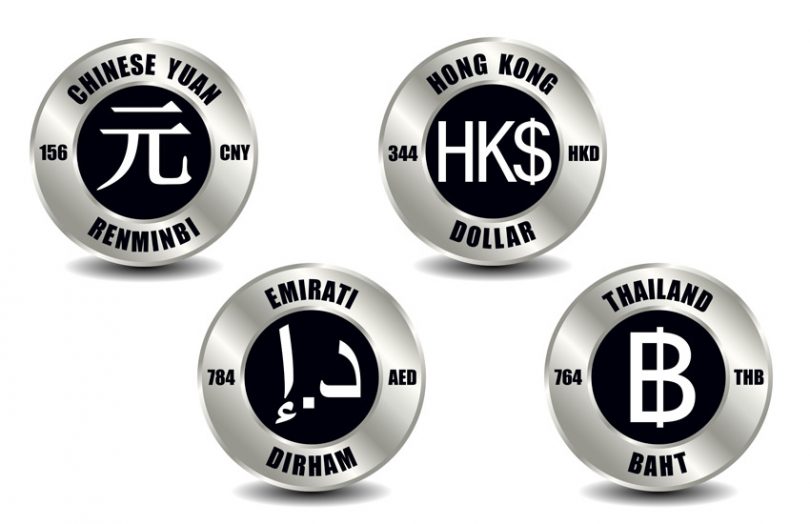It’s a little provocative to say the Multi CBDC or M-CBDC Bridge project for cross border payments might replace SWIFT, even just in Asia, given it’s at such an early stage. However, should it reach production, it will remove the need for SWIFT for the participant jurisdictions. Today at the Hong Kong Fintech Week, the four central banks involved in the central bank digital currency (CBDC) project shared details about its progress, including use cases and the 22 private institutions now involved in trials. These include all six of China’s state-owned banks.
With the help of the Bank for International Settlements (BIS), the central banks of China, Hong Kong (HKMA), Thailand and the UAE are developing a shared DLT system where they can use their own CBDCs for cross border payments. The initiative is an extension of the Inthanon LionRock project between Thailand and Hong Kong.
So far, it seems settlement can be reached in under two seconds and it could cut the cost of international payments in half.
Banks need to be incentivized to participate
If you ask SWIFT, they’d say payments are usually instant with their messaging system. However, the current correspondent banking system involves intermediary banks, especially in Asia. This creates bottlenecks while they check KYC details and adds massive costs and delays. The blockchain-based M-CBDC project enables instant direct payments between banks, which removes that cost layer.
That payment expense to corporates and individuals represents income to many banks. Shu-Pui Li, the ex-HKMA executive who represents the Central Bank of the UAE, stated that for the M-CBDC system to get adopted by banks, there needs to be something in it for them. He highlighted that the MENA area built a regional payments system to connect 22 countries. Despite being lower cost and more efficient, adoption has been far less than expected a year after launch.
“My personal view is banks don’t like changes,” said Shu-Pui Li. “More efficient, lower costs doesn’t mean higher revenues to them. A well established correspondent banking network – they make quite a bit of revenue from there.”
He continued, “M-Bridge cannot be purely a replacement or alternative to the correspondent banking network. It won’t work. We need to make a difference using M-Bridge. Make it a win-win situation for all participants with value added services. The team here needs to think about how to make that happen.” That ‘how’ requires applications.
Trade settlement dominates use cases
The private sector participants identified 15 use cases that are dominated by trade and capital markets applications, with trade being the initial focus. Cross border trade between the four jurisdictions amounts to $730 billion annually. Applications include trade settlement, programmable trade finance, supply chain finance, and interoperability with digital trade finance platforms.
The 22 private participants include several banks from Hong Kong and the UAE, and six international banks, apart from the Chinese banks. The international banks are HSBC and Standard Chartered which previously participated in the Thai-Hong Kong cross border CBDC trials, as well as Goldman Sachs, Societe Generale, UBS and Singapore’s DBS.
M-Bridge could also be used domestically
Standing back, if you have a DLT solution that enables cross border CBDC payments between banks, then it could also work for domestic CBDC payments.
Not every country globally has a real time gross settlement (RTGS) system, and the quality varies. The Central Bank of UAE’s Li observed, “It (M-CBDC Bridge) also does domestic funds transfer between banks and central banks. To a certain extent (it’s) even more efficient, effective and highly more resilient than a lot of domestic RTGS.”
China’s Changchun Mu leads the technology working group for the M-CBDC Bridge project, and he was keen to emphasize that the solution has a lego brick or modular approach. This enables flexibility and compatibility to accommodate different approaches between jurisdictions.
For example, M-Bridge is designed as a shared ledger for cross border payments. But some may prefer not to rely on it directly and might also have their own ledger, which could be a blockchain CBDC or alternatively interlink with conventional RTGS systems. He also emphasized that all data is encrypted and those not party to a transaction have no access to it.
Move fast but do it right
Meanwhile, Facebook’s motto of “moving fast and breaking things” is often bandied about. Federal Reserve Chair Jerome Powell has said of CBDC that it’s more important to do it right than to do it fast. Colin Pou, Executive Director at the HKMA had his own variation. “We need to do it fast, yet do it right,” he said.
Nonetheless, he noted that there have been many attempts to improve cross border payments with little impact. He believes there is currently an “unprecedentedly strong political commitment”. Reading between the lines, one might infer that commitment is from China which fears the use of SWIFT as a political tool or its desire to increase the international reach of the renminbi. However, Pou clarified his statement as the G20’s roadmap to improving international payments.
He sees this political environment combined with the automation possibilities presented by DLT and smart contracts providing a unique opportunity.
“The metaphor I have been using quite often to describe this situation is that we now have the right soil and we also have the right climate. And so we probably need to act fast,” said Pou.







